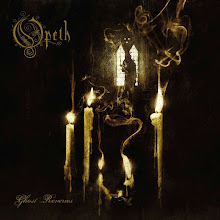
A masterpiece, thats how I would defined it if you ask me, but listen for yourself dear web navigator.
Painkiller is a 1990 gold-certified album by British heavy metal band Judas Priest, their 12th studio album. The album was recorded at Miraval Studios, Brignoles, France in early 1990, and mixed at Wisseloord Studios, Hilversum, the Netherlands later that year. It was the first album with current drummer Scott Travis. The original LP, cassette and CD versions were released on September 3, 1990. A re-mastered CD was released in May 2001. The album received a Grammy nomination for Best Metal Performance at the February 20, 1991 33rd Annual Grammy Awards.
Judas Priest returned to their classic '70s style, while borrowing contemporary speed metal techniques, resulting in their most critically acclaimed album in a decade. The album is viewed by some as the quintessential speed metal album and the style proved highly influential to European power metal bands such as Gamma Ray and Primal Fear.
Following the tour for this album, singer Rob Halford left the band and maintained little contact with his former bandmates throughout the 1990s. The reason for this was due to growing tension in the band, although not, as popularly attributed, because of Halford's homosexuality. Halford wanted to create his new band, Fight, and had to legally leave Judas Priest to allow his creation to be sold. Judas Priest declared that they did not exist anymore after Halford had left. However, they would record and tour a few years later, with singer Tim 'Ripper' Owens, on the albums Jugulator and Demolition.
Following the tour for this album, singer Rob Halford left the band and maintained little contact with his former bandmates throughout the 1990s. The reason for this was due to growing tension in the band, although not, as popularly attributed, because of Halford's homosexuality. Halford wanted to create his new band, Fight, and had to legally leave Judas Priest to allow his creation to be sold. Judas Priest declared that they did not exist anymore after Halford had left. However, they would record and tour a few years later, with singer Tim 'Ripper' Owens, on the albums Jugulator and Demolition.
The Painkiller itself is one of a series of fictional messiahs created by Judas Priest. The Painkiller is described as a metal messiah sent to the world to destroy evil and rescue mankind from destruction. The Painkiller is believed to be inspired by the fallen angel from the Sad Wings of Destiny album cover that Judas Priest recorded early in their musical years. He also makes an appearance along with the Hellion (from Screaming for Vengeance) on the cover of Metal Works '73-'93, and a reappearance on the cover of Angel of Retribution.
The most noticeable feature of the Painkiller, besides his metal body is that he 'rides the metal monster'; a motorcycle with a dragon for the chassis and two circular saws for wheels
The most noticeable feature of the Painkiller, besides his metal body is that he 'rides the metal monster'; a motorcycle with a dragon for the chassis and two circular saws for wheels
















No comments:
Post a Comment